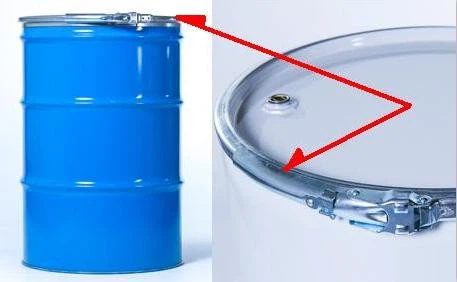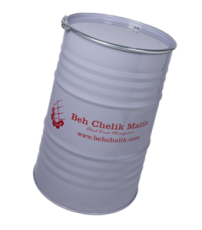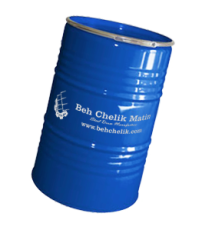Drum Price
Factors affecting drum price
Drums are essential components in the packaging and storage industry, used for a wide range of purposes, including transporting chemicals and storing food products. The drum price can be affected by several factors, including the thickness of the metal sheet used in the bottom, lid, and body, the internal coating, the type of drum, and its volume. Here, we examine the critical standards that influence drum prices and provide a comprehensive guide for industry stakeholders.
Four factors influencing drum price
- Material thickness
- Inner cover
- Type of drum
- Drum volume
Material thickness
Metal sheet thickness: The thickness of the metal sheet used in the bottom, lid, and body of the drum is the main determinant of the drum price. Thicker metal sheets offer greater durability and strength, which are essential for transporting hazardous or heavy materials. Standard thickness varies depending on the drum’s use:
Body thickness: Common thicknesses range from 0.7 mm to 1 mm. Drums with thicker sheets are more resistant to punctures and impacts.
Bottom and lid thickness: These components need greater thickness to withstand the stresses of storage and transportation. Standard thickness ranges from 0.8 mm to 1.1 mm.

The inner coating of the drum is crucial for preventing contamination and corrosion, especially when storing sensitive or corrosive materials. Common coatings include:
Epoxy-Phenolic Coating: Suitable for a wide range of products, including chemicals, this coating provides excellent chemical resistance.
Uncoated (Raw Steel): Cheaper but only suitable for non-corrosive materials.
Color coating
Lacquer coating
2. Quality of coating application:
The method and quality of coating application also affect the price. High-quality and uniform coatings offer better protection and longer lifespan, and due to the need for precise quality control, they are more costly.

Type of drum
Open head drums: These drums have removable lids and are suitable for storing solids or viscous liquids. The need for a sturdy and appropriate lid adds complexity to the production process and increases costs.
Closed-head drums: These drums have non-removable lids with small openings for pouring or pumping liquids. They are designed for storing liquids and require more precise manufacturing processes to prevent leakage.
Drum volume
1.Standard volumes: Drums are produced in various volumes, with 55-gallon drums being the most common. Larger drums require more materials and more complex manufacturing processes, increasing overall costs.
2.Custom volumes: Drums with custom volumes are produced for specific customer needs and often result in higher prices due to the need for specialized production and possibly unique design and tooling.


Additional factors
1.Production standards and compliance: Drums must comply with various international standards, including those set by the United Nations (UN), the United States Department of Transportation (DOT), and the International Maritime Organization (IMO). Compliance with these standards requires rigorous testing and certifications, which increase costs.
2.Market dynamics: The prices of raw materials, labor costs, and market demand significantly impact drum prices. Fluctuations in steel prices or changes in labor costs in production regions can lead to price changes.
3.Sustainability practices: Manufacturers increasingly use sustainable practices, such as using recycled materials or reducing energy consumption. While these practices may initially increase costs, they often result in long-term savings and add value for consumers.
Conclusion
The drum price is influenced by a complex interplay of factors, including material thickness, inner coating, drum type, and volume. Adhering to industry standards and ensuring compliance with legal requirements is crucial for maintaining quality and safety, especially for drums used in transporting hazardous materials. Understanding these factors is essential for businesses to make informed purchasing decisions and manage costs effectively.
By considering these aspects, industry stakeholders can better navigate the market and ensure they select suitable and cost-effective drums for their specific needs. As the industry continues to evolve, awareness of these influencing factors will remain critical for maintaining competitiveness and meeting customer expectations.
Order registration
With more than a 20-year of experience, relying on its technical knowledge and expert staff, Beh Chelik Matin company has been able to manufacture high-quality steel drums to meet the needs of various industries. Compliance with all necessary standards to produce quality products is our main priority to meet all needs of customers. Respected customers can place an order by informing the sales experts about the weight or thickness of the drum sheet and the appearance specifications such as its color, required printing type and inner coating .

Open head steel drum

Neck-In Drum

Tight head steel drum
Some industries related to steel drums

Adhesive and resin industry
Steel drums with closed doors are very suitable for packaging materials such as glue and resin due to their resistant structure and variety of sizes. These drums, which are made of high quality steel or plastic, can protect resin and glue against chemical and physical factors and prevent changes in the quality of the materials inside them.

Food industry
Steel drums play a vital role in the food industry. Their sturdy and versatile construction makes them ideal for storing and transporting a variety of food products. However, ensuring the safety and quality of food products stored in these drums requires compliance with strict standards and regulations.

One of the most important topics in lubricants that affects the quality, safety and longevity of the product is packaging. Steel drums are the preferred choice for packaging lubricants due to their strength and protective properties. To ensure optimal performance, a steel drum for lubricant packaging must have certain characteristics.

pharmaceutical industry
Drug drums are a vital component in the pharmaceutical packaging industry. Their robust construction ensures the integrity and safety of contents during storage and transportation. These drums are often covered with a protective coating to prevent any possible reaction between the metal and the drug.

